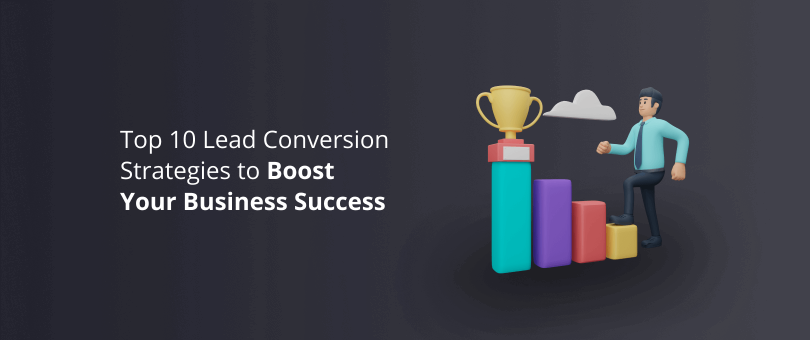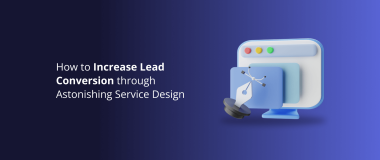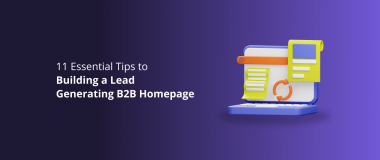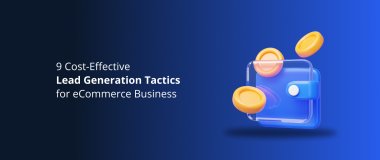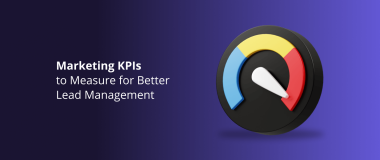When one hears the word ”leads”, numbers often seem to come to mind. But that isn’t always the case when we’re talking about leads. Some think it is just about listing names and data of every contact that comes across your website or dedicated channels. However, it’s not just about getting as many contacts as you can, it’s about making sure that these leads would actually lead you to a successful sale regardless of it is you’re selling or promoting.
But how do we go about converting leads into sales? There have been many articles dedicated to lead conversion being an important aspect in the sales generation process all across industries, but what effective approaches can one take to use such conversions to boost business success?
While one may worry this may be costly, taking on the right conversion strategies would boost your business without having to spend anything! Most businesses have actually been utilizing the concept of leads by generating their prospects and potential clients. However, not all generated leads turn into sales opportunities. On average, more than 50% of people who land on your website just leave and do not come back. This, in turn, becomes a loss.

And that’s where the lead conversion process comes in. As a retailer or business owner, it is crucial for you to capture and turn the numbers to your benefit. Here are some strategies you can use in converting your leads.
1. Know How to Capture the Right Market

Always have your target market in mind when you’re presenting or communicating your business. The question of who your business is for should be defined by your brand, and how your services or products cater to that market
Your leads can be identified by how you profile people that would most likely look into your company or business online.
Your target market can be found within the economic marketplace. Your leads can have a particular niche to products, services, or interests that appeal to them only. You, as a business, must work towards connecting and marketing sales efforts that lean toward giving that particular group of people what they want or need. You can start by identifying your customer base and understanding their behavior using the following categories:
- Demographic Data. Age, gender, education level, employment, role in the family, etc.
- Geographic Data. Location, address, region, country.
- Socio-economic Data. Lifestyle, social class, personality, and attitude.
- Purchase Behavior. Brand loyalty, seasonal purchases, buying triggers.
Do your research. After segmenting your leads with the right profile for your business, this will help you understand buying decisions. It can also help you determine the right time to post offers. It pays to know the appeal of your products and services on a certain demographic, as this factors in on how it will help your targeted leads in the market to convert to desired success turnouts.

2. Understanding the Lead Conversion Process
From the moment a visitor comes across your website, a business must understand the lead progression starting from its first encounter to the end goal – which is to get a lead converted.
Consider it like a trail of breadcrumbs. It begins when a visitor sees content that interests them, and after a few clicks, they are taken to a landing page where they are asked for contact details in exchange for services or information that drew the visitor to the page in the first place. This is how the basic lead conversion process works, and a business needs to know how to pave the way for leads to follow the said path.

Most lead conversion paths start with:
Content Marketing
93% of B2B companies say content marketing generates more leads than traditional marketing strategies. The numbers say it all: Content is what drives your target market to check out what your business has to offer. Creating the appropriate demand for your products is what drives people to you. Your content is the hook that captures the attention of your potential customers.
This is the first stage where you create and build your reputation – from emails, blog sites, social media pages, website articles, even your landing page can say a lot about your business. Provide people with content that is relevant to them and will possibly provide answers to their problems.
Lead Generation Forms
From sign up forms, registration forms or contact forms, make sure that little to no issues occur when completing them. Web forms should be a good and easily-manageable act for prospects and visitors to get what they want from you as a business.
CTAs or call-to-actions are also good ways to generate and convert leads, as your customer can click those to direct them to a more comprehensive site – your landing page. Calls-to-action must be action-oriented, compulsive and relevant to your target market.
Promotion Through the Landing Page
The landing page is where it all happens. This is where presentation matters. Your landing page is where you can provide an overall view of your company’s services, products, and everything else about your business up-front. A relevant landing page must be tailored to make your target market see that you are the right fit for their needs.
A good lead conversion path has well-defined landing pages, active call-to-actions, accessible and convenient web forms, and well-developed, appropriated content. Keep in mind that there are many other lead conversion paths to choose from. However, it is best to choose the conversion processes right for your brand.
Related Articles:
- 10+ WordPress Plugins That Will Help You Convert More
- How to Design Your Website For Conversion Rate Optimization
3. Use Communication Channels Preferred by Customers

Most businesses in this day and age use multi-channels when marketing a product or service. A product or service is considered properly marketed when there is constant interaction from consumers and an increased brand reach.
“Customer engagement efforts are much more effective when marketers can anticipate what visitors are searching for, where they want to go next, what problems they are trying to solve, and what promotions will be of value to them.” -Jeff Fuhriman
The question is – Are you using the channels preferred by your prospects and leads? Knowing your target market is one thing; another is knowing where they are and how they can be reached. Further discussed in an article, customers have their own channel preferences.
A study further stated:
“Best-in-class retailers use more channels and personalization tactics than their peers. Personalization done well (like retailers enabling personalization across communication channels) can result in significant benefits to the retailer. For example, when the shopping experience is highly personalized, customers indicated that they were 110% more likely to add additional items to their baskets and 40% more likely to spend more than they had planned.”
In order to convert leads, you have to know where you can reach them. If your leads prefer emails, send them emails. If your leads prefer calls, start calling. If your leads prefer reaching out on social media, start connecting and posting your relevant content to attract and pull them in. Businesses should understand that marketing efforts come with the right interactions, and your cold sales lead might just turn into a warm one.
4. Achieve Lead Quality over Lead Quantity
With all this discussion on attracting your ideal target market, one might be tempted to go after the names and contact details of people who just came across your website. Numbers aren’t everything when it comes to getting quality contacts that are interested in your services and products. Interest alone and getting their contact details isn’t the end game.
Lead quality is more important than lead quantity. According to a report, “B2B marketers have demonstrated a clear preference for generating high-quality leads (68%) over generating a high volume of leads (55%).”
Defining lead quality will always be to your advantage. Spotting the right lead by establishing your target market is the first step, followed by the right content and proper presentation for attracting and nurturing. Lead quality is emphasized with lead nurturing, and the results are undeniable: nurtured leads produce an average of 20% increase in sales opportunities versus non-nurtured leads, and companies that use lead nurturing generate 50% more sales-ready leads at 33% lower cost!
Quality leads often increase opportunities, boost responses from warm sales-ready leads, and attract more potential leads. Always aim for quality contacts. Every business owner should concentrate on the bottom line – attracting the right leads which will result in positively good conversion rates.
“Always aim for quality leads. This creates increased opportunities, boosted responses, and attracts more potential leads from your existing leads. Every business owner should concentrate on the bottom line – getting the right leads which will result in positively good conversion rates.”
5. Verify the Data Received
Data quality is said to be one of the most common issues found when performing lead conversions. Getting the wrong email address or name isn’t just a simple error, it’s a lost opportunity. 92% of businesses admit that their contact data is not accurate!
If the data on your prospect lead is wrong from the start, most of the steps you follow on your lead conversions will be in the wrong direction as well. Avoid “dirty data” by establishing rules of standardizing data in your marketing process. And it’s just as important to have your sales and marketing team aligned and know how to use the software tools for your lead conversions correctly.
Remember: validation of data is key to getting quality data. Do this by testing out every form on your website. Send out test emails to track how they’re received. Уou can also consider proper hygiene of the email list cleaning over time. It is important that the data received is documented to help measure how effective your lead generation is.
6. Integrate your CRM Database and Marketing Automation Platform (MAP)
As previously discussed, your lead conversions rely on quality processes and the proper use of tools in documenting and segmenting your leads. CRM databases and Marketing Automation Platforms allow you to use your leads wisely. The CRM database contains the customer details you’ve obtained from lead generation.
You may also use CRM systems that compile relevant information about customers from different channels including direct email, social media pages, website, live chat, blogs and the like. Top CRM software that your business may consider includes amoCRM, Salesforce, WP-CRM, Hubspot, Intercom, and more. Be sure to use the software appropriate to your business needs.
In addition, Marketing Automation Platforms are software that has been designed to perform your marketing strategies on multiple channels and in a repetitive order. For example, you use a particular MAP to buy or sell at Amazon or to post scheduled content on Twitter and Facebook. Some of these marketing automation tools include Hubspot, ActiveCampaign, SaaS BPM, and Ontraport.
By understanding your CRM database and synchronizing it effectively with your chosen Marketing Automation Platform, you will be able to use your leads well and convert them faster to sales.
7. Use Lead Scoring to your Advantage
Lead Scoring allows you to determine the value and importance of your leads. The difference between lead scoring to lead quality is that while lead quality helps determine a prospect to an ideal lead profile that would become a long-term converted customer, lead scoring allows you to assign a value to each lead based on the information you were able to gather about them.
Try to think of lead scoring as your business adjusting and adding value to the data provided, versus your business searching for the valued prospect that would adjust and fit to your ideal market.
Lead scoring covers demographic information and observed behavior whether it’s online or offline. Lead scores help you quantify the value of a lead based on what they have on their information so far. “For example: your business might be looking for high-leveled business associates that are into eCommerce. Checking off points for a business associate that viewed your website’s eCommerce blog entries might help you better determine a quality lead.”
Lead scoring is a technical but effective way to rank your leads based on preset scales chosen as qualifiers to successfully convert your leads into sales.
8. Highlight Testimonials from Happy Customers

With the best presentation and consistent promotion, your brand can market itself. The more people that give positive feedback about you, the more trust you gain from your target audience. The positive feedback your satisfied customers give you is equivalent to good word-of-mouth.
Shoppers often check sites like Google Reviews before making the decision to purchase. 9 in 10 B2B buyers are more likely to make a purchase after reading a trusted review.
You can build trust by providing insight on your customer experience, and promote the positive aspects of your business by having your nurtured leads provide good reviews on your behalf.
Make sure that you allow customer reviews and ratings on your website(s). Furthermore, a good practice is to highlight those customers who gave you the best feedback.
9. Never Fail to Follow Up
We’ve been told countless times that follow-ups are the key to success. But what exactly does it mean to follow up? And what are we following up on?
“It’s not about having the right opportunities. It’s about handling the opportunities right,” says Mark Hunter.
There is no secret when it comes to connecting or reaching out to target clientele. Letting them know that you exist and reminding them of your services or offers is a constant effort. You don’t stop with one or two emails sent their way, or a one-time demo call. Always make it a point to have your target leads know that you have what they need. And following up on the right leads almost always involves a sales opportunity for your business.
A good response time is beneficial to building a relationship with your customer. A crafty follow-up is not about pushing your clients and making every call sale. It is about being proactive and providing your customers with a possible solution to their needs.
10. Measure Your Rate of Lead Conversions

65% of businesses say generating traffic and leads is their biggest marketing challenge. This is probably because they are not using the correct conversion strategy for their business. When it comes to lead conversions, the outcome should define your conversion. Make it a result-oriented process.
In doing so, you are able to create key performance indicators that help track your lead conversion rates. For example, it could be the total number of shares of your content, the length of time spent by a visitor on your website, or the actual number of purchases made. Understanding your conversion rate is a vital factor in hitting your sales target.
Measure your efforts so that you can manage the results well. You can identify a clear rate of conversion measurement through various analytics sites such as Google Analytics, Mixpanel, Segment or Similar Web.
Conclusion
Leads shouldn’t just stop at generating contacts. Lead generation should turn into a successful conversion outcome. If done right, it may just be the boost your business needs. Know your target market. Use various digital channels, online techniques, programs and tools appropriate for your business.
With these, your path to successful lead conversion may just materialize. Ecommerce businesses are staging their own game plan in order to capture their leads and convert them into sales. Now you can get ahead and start your own game plan to success.
